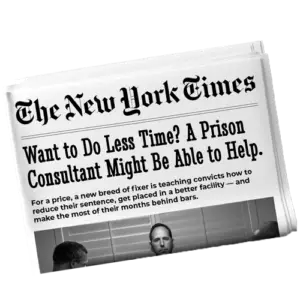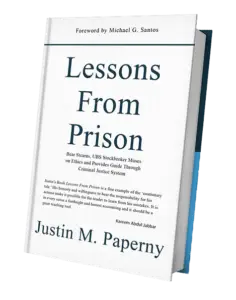This post shares excerpts and insights from our New York Times article about Hugo Mejia. You can read the full article [here]. If you’ve read Blog #1 and Blog #2, you’ve seen how quickly things go wrong when defendants keep defending themselves—or walk into their pre-sentence interview unprepared. This blog picks up from there.
I’ve lost count of how many people have called me after firing their lawyer—or thinking about it.
It happens all the time. They paid the retainer, maybe got some solid advice at the start. But now sentencing’s coming up, and no one’s talking about life after court.
That’s exactly where Hugo Mejia found himself. He hired a lawyer who claimed to understand crypto—but Hugo was the one explaining how blockchain worked. He moved on to another attorney, hoping for better. Same story. By the time he ended up with a court-appointed lawyer, he’d wasted months—and missed the window to build a record that could work in his favor.
I’m not here to bash lawyers. I work with good ones every day. But most of them focus on the law—not the Bureau of Prisons.
They’ll help you get the best possible deal. But once the plea is entered, they think their job is done. They’re not thinking about RDAP eligibility. They’re not talking about designation. They’re not preparing you for how to show remorse in a way that actually gets documented.
And that leaves stakeholders guessing.
I’ve had clients call me a week before sentencing asking if they should bring anything. One asked if he needed to speak in court or just let his lawyer handle it. Another didn’t even know what facility he was being recommended for. They weren’t lazy. They just assumed their attorney had it covered.
Most lawyers focus on the courtroom—not what comes after. hey don’t bring up where you might serve time, how time credits work, or how the pre-sentence report affects release. It’s not their focus—and you can tell. That blind spot leaves defendants unprepared and at risk.
Hugo caught on fast. He realized that his lawyer—while helpful in the legal fight—wasn’t going to help him build the kind of record that judges, probation officers, and BOP staff actually respond to. That’s when he started preparing on his own. Not because he wanted to take over, but because he didn’t want to leave something this serious up to assumptions.
He showed up to the pre-sentence interview prepared. He made specific requests at sentencing. He knew to ask the judge for RDAP and for a recommendation to Sheridan. That’s why his sentence—36 months instead of 57 to 71—came with the possibility of serving just over a year.
That didn’t happen because he had a more persuasive lawyer. It happened because he understood how the system works—and filled in the parts his lawyer didn’t cover.
I hear from families every week who say, “We just didn’t know.” They didn’t know that their loved one could’ve had RDAP in the transcript. Or that the judge might have honored a placement request if they had made one. Or that the tone of the pre-sentence report would follow them for years.
That’s why I’m writing these blogs. Not to point fingers. To close the gaps.
So here’s the question: if your sentencing is coming up, do you know what’s in the pre-sentence report? Do you know what the BOP will see when they assign your facility? Do you know what your lawyer is asking for—or not asking for—in court?
And if you don’t, who’s going to fix it?
Every Tuesday, we host a webinar at 11AM Pacific / 2PM Eastern. I walk through what lawyers often overlook—and what defendants can still do to protect themselves. If you’re not getting this information elsewhere, show up. No sales, no pitch. Just the stuff I wish someone told me when I was in your position.
Justin Paperny



